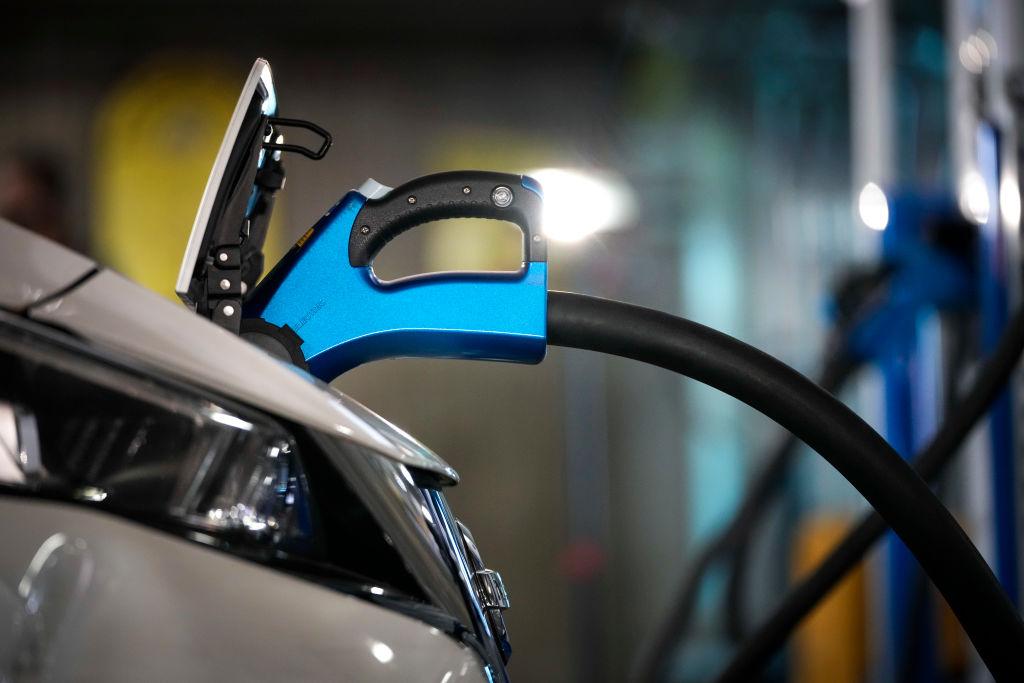It looks like 2024 is definitely not the year to be an electric vehicle manufacturer.
With companies and consumers finally getting tired of having EVs pushed on them by top-down government policies, the demand is now lower than ever.
As reported Wednesday in Fortune, the artificial increase in the demand for EVs is resulting in severe financial consequences for EV manufacturers.
According to Fortune, Tesla’s price cuts on their EVs are rippling throughout the whole market, with car leasing companies getting the brunt of it.
These consequences are being felt most by leasing companies in Europe, such as Ayvens (which has already received checks from manufacturers to offset slumping prices) and Arval, where regulations regarding fleet emissions are much more stringent.
For instance, in the UK, zero-emissions vehicles must make up 22 percent of all cars sold this year, with that number rising to 28 percent next year, and Volkswagen is nowhere near next year’s new permitted level of emissions as mandated by the European Union.
The EU might plan to phase out traditional gas cars by 2035, but, with the recent decline in the EV market, that’s looking like a much less attainable goal.
And while all this is bad news for manufacturers, it’s even worse for the leasing companies.
While the EV companies themselves can offer buyback guarantees to these leasing companies for new cars, manufacturers still need to ensure that these companies can sell or rent used EVs at a decent price — or face financial penalties.
Now, as Fortune explained, leasing companies make leasing agreements based on the ability to earn back the value of the car over time through the payments people make to rent the vehicle, that value based on the expected value of the car at the time the contract is set to end.
If that car drops more in value than is projected, then the leasing company will lose money on that car.
Jeffries analyst Philippe Houchois explained that, in terms of the automobile market, “[in] the end it is the difference between new and used price that is the real cost of a car.”
Therefore, many EV companies find themselves compelled to compensate for the declining value of their vehicles in the rental and secondhand market, especially as American rental companies like Hertz offload most of their EVs and European ones like Sixt SE announce that they will stop offering Teslas to customers come December.
As Ursula Weigl, a partner at McKinsey consultancy, explained, “[the] EV market is extremely distorted by incentive schemes around the world,” with the demand “artificially stoked, and it currently ends with the second-hand market.”
Now, while Fortune blames this entire domino effect currently threatening car leasing companies on Tesla cutting its prices, Tesla would not be cutting its prices unless the demand was already low.
If Tesla could get more for their vehicles, they would absolutely charge more.
As Fortune pointed out, the demand for EVs has been all but mandated around the world, especially in Europe when, in reality, there are still not that many people who actually want to buy them.
Thus far, an EV is something of a niche product, not something the average consumer really wants, or can even afford.
Weigl is absolutely right in calling the market “distorted.”
The EV market has certainly been distorted by the EU’s crusade to eliminate their arch-nemesis, carbon emissions, and the Biden administration’s attempts to score woke brownie points by essentially forcing car companies to manufacture more EVs than people actually want.
And the sad irony is, if governments had allowed demand for EVs to grow naturally with the free market, most of these companies would not be in this situation.
It’s time to accept the fact that most people are not yet ready or willing to adopt EVs, and may never want to.
Distorting the market to force people to buy something they don’t want will only end up killing any possibility of people adopting that product on their own.
Maybe now our governments can trust that their citizens to actually know what they want.
This article appeared originally on The Western Journal.

























 Continue with Google
Continue with Google